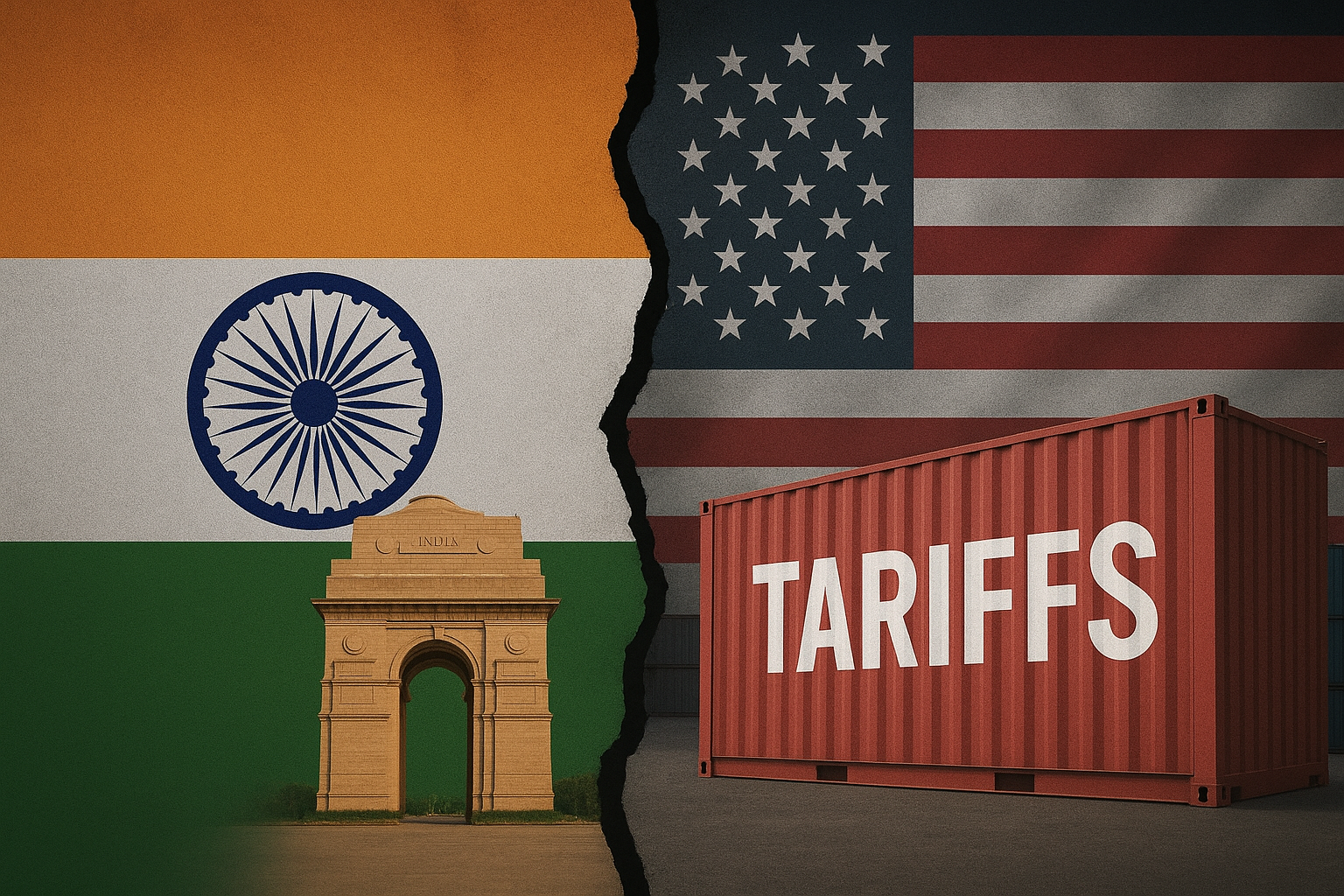New Delhi, August 21, 2025 – For much of the past decade, India has been hailed as the world’s fastest-growing major economy, a country balancing rapid digitalization, booming consumption, and global investor confidence. But that optimism is now facing a fresh challenge: the looming threat of steep U.S. tariffs.
The Sharpest Downgrade in Asia
Indian companies have just recorded the steepest earnings downgrade in Asia. Analysts cut profit estimates for the next 12 months by an average of 1.2%, reflecting rising fears that American trade barriers could disrupt growth. While this figure may seem modest, the signal is powerful — global investors are beginning to lose some of their earlier confidence in the Indian market.
Until recently, India was the top choice for Asian fund managers, ahead of China and other emerging markets. But the tariff threat has shifted sentiment. India has slipped from being seen as a “must-own” growth story to one that carries new uncertainties.
Tariffs and Their Potential Impact
The United States is considering tariffs of up to 50% on a broad range of imports. For India, the direct exposure might appear limited — only about 9% of corporate revenues come from the U.S. market. But the consequences go far beyond those numbers.
Economists warn that the tariffs could shave as much as 1 percentage point off India’s GDP growth. With India currently projected to grow at around 6.5% this year, such a slowdown would be felt across industries, jobs, and household incomes.
“Trade wars rarely stop at direct numbers. They create second-order effects: disrupted supply chains, falling investor confidence, and delayed investment decisions,” explained a senior analyst at a Mumbai-based brokerage.
The Sectors Under Pressure
Several sectors are already bracing for impact:
- Automobiles: India exports a significant volume of cars and auto components to the U.S. Higher tariffs could make them uncompetitive overnight.
- Consumer goods: From textiles and garments to electronics, many Indian companies rely on U.S. buyers. Price hikes would threaten their global market share.
- Capital goods and machinery: With rising costs and uncertainty, Indian manufacturers risk losing contracts to Southeast Asian rivals like Vietnam and Indonesia.
The Investor Mood Turns Cautious
The change is visible in financial markets. Foreign portfolio investors, who pumped billions into India last year, are turning cautious. Some are reallocating funds to smaller Asian economies less exposed to U.S. trade policy.
“India remains a growth story, but the tariff risk is now part of every investor conversation,” said a Hong Kong–based strategist.
The Human Angle – Jobs and Livelihoods
Beyond balance sheets and market charts, the human impact could be significant. If demand for Indian exports falls, factories producing cars, garments, and electronics may scale back operations. That could mean job losses for thousands of workers, particularly in manufacturing hubs like Gurugram, Pune, and Tiruppur.
For small and medium enterprises (SMEs), which often supply larger exporters, the pain could be sharper. Many operate on thin margins and lack the financial cushion to absorb sudden losses. “We already work on 2-3% margins. If U.S. buyers cancel orders, we cannot survive for long,” said a textile manufacturer from Tamil Nadu.
How India Can Respond
Policymakers in New Delhi are aware of the risks. Three key strategies are being discussed:
- Strengthening Domestic Demand: With a 1.4 billion-strong population, India’s internal market is itself a powerful growth engine. Government spending and consumer incentives could help absorb external shocks.
- Diversifying Export Markets: Indian trade officials are intensifying talks with Europe, Africa, and Latin America to reduce reliance on the U.S. and China. Bilateral trade agreements could open new doors.
- Boosting Self-Reliance: Under programs like Make in India and Atmanirbhar Bharat, India is aiming to expand domestic manufacturing and reduce vulnerability to external disruptions.
A Test for India’s Growth Dream
For now, India’s growth story remains intact — but tested. The country’s strong digital economy, rising middle class, and infrastructure push provide resilience. Yet the global environment is becoming more complex, with protectionist trade policies threatening open markets.
India’s challenge is to turn this crisis into opportunity. If it can strengthen its domestic economy, diversify its partnerships, and accelerate reforms, it may not only withstand the tariff shock but also emerge stronger.
As one Delhi-based economist put it: “The tariffs are a reminder that India cannot rely solely on global goodwill. It must build resilience at home while engaging smartly abroad.”
Conclusion
The U.S. tariffs are more than a trade dispute — they are a stress test for India’s ambition to become the next global economic powerhouse. Whether India weathers this storm or stumbles will depend on how quickly it adapts, innovates, and protects its people from the fallout.
For millions of Indians hoping for better jobs and rising incomes, the stakes could not be higher.

